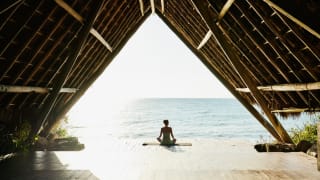Destination branding in a time of lockdown
Contributed by Rebecca Barker, Director, Tech & Innovation, EMEA, and Gary Bryant, Executive Director, Strategy, at Landor
What becomes of a place brand when we can’t travel?
Worldwide travel bans and country lockdowns have completely stalled the global tourism industry. For place brands, it has left them with an identity crisis. What does it mean to be a destination when visitors can no longer travel?
Well, far from obstacle or paralysis, COVID-19 should be a call-out to creative and inventive minds to release their imaginations and ingenuity on new and timely solutions. They need to utilise this time to make destinations seem so desirable that it is the first place people want to visit when the travel restrictions are lifted.
What’s in a place brand?
A place brand does not cease to be a place brand simply because it can no longer be visited. The same drivers that make us want to holiday and travel still exist. If anything, these drivers are being tempted, teased and taunted even more right now as people are locked inside without a clear end in sight. They want to escape, relax and explore. Place brands have the opportunity to help people do just that. Only now they’ll need to experience destination a completely different way.
Whilst iconic buildings, museums and natural wonders are all drawcards in their own right, travellers are ultimately looking to participate at a deeper level be it through experiencing the local culture, food, people or simply to learn the history, background and stories associated with these places.
Place brands that use technology to deliver on more than just digital visuals will be the ones that excel in these unique times.
Bringing destinations to the traveller
Technology and travel are already intertwined. We mostly search and book our holidays and adventures online. More than that, we explore and investigate online too, taking in reviews and photos on the web, even taking a walk down promenades through Google’s street view. People are already experiencing place brands through technology so, whilst visitors are unable to travel to you, you need to travel to them. How can you go about doing this?
The simplest way is to connect with them virtually and share your destination like the beaches of Maui or a video of an Ibiza boat party. These are however extremely basic and don’t engage the viewer at a deeper level and is unlikely to build any memories in the mind of the customer.
Taking that approach a step further is to add an information level to the visual experience. Museums have already mastered the art of bringing its enjoyments into people’s homes. The British Museum, the Louvre and the Guggenheim have all used VR to great effect. Jerusalem has also used the technology to bring to life its historic sites although this one lacks an information layer.
So how do you really dial up the experience?
It comes back to engaging the customer in a relevant way for the times and brings the experience to life in an interactive manner. Giving that layer that additional experience that travellers are looking for beyond the landmark. Taking the museum experience a step further, Google Arts & Culture asks visitors to recreate the scenes from famous paintings in their own homes with some often hilarious and highly creative results.
&Beyond, the global safari operator now provides two live game drives daily at sunrise and sunset, just like you’d do in one of their game reserves. It is highly targeted towards children with viewers allowed to submit questions about the animals and birds they find. This makes for an engaging and educational experience that is highly relevant for parents and children. You’d rather your child is watching and learning something rather than being glued to a mindless computer game.
Puerto Rico has missed its normal Spring Break influx, but that doesn’t mean you can’t experience the vibe at home. They live-streamed cooking and cocktail making classes, salsa dancing lessons on Instagram over the weekend when most people visit the country so you could get a feel for the experience. A brilliant way to share the Puerto Rican experience and likely enticing viewers to visit as soon as they are able.
Even the Chippendales have kept their brand alive with the dancers showing off their bodies in home workout videos that viewers can participate in to keep fit and healthy, whilst still giving just that sliver of taste of what customers really come to shows for!
Getting it right now and for the future
As can be seen, place brands need to identify what it is that visitors really come to see them for. It requires them to go deeper than just the sights and into the experience they offer. Once identified, this content need can be packaged in a manner that is relevant for the home-based customers. It should help them solve some of the challenges they face on a day-to-day basis such as keeping the kids entertained, eating healthily or learning new skills.
The place brands that really get this right will start to think about how they can enhance their virtual experiences to such a degree that they last beyond the pandemic and travel bans. Doing so might open up new revenue streams and drive preference and attraction for visitors in the future.
Now is the time for your place brands to truly ‘take us there’ so that when we (eventually) can, we will think of you first.
Related reading
Will your recovery plan be sustainable?
9 'Stay Home' campaigns that are rooted in place DNA
What investment promotion agencies can do now to prepare for what's coming next
Beyond marketing: How DMOs and EDOs are evolving their role during COVID-19









